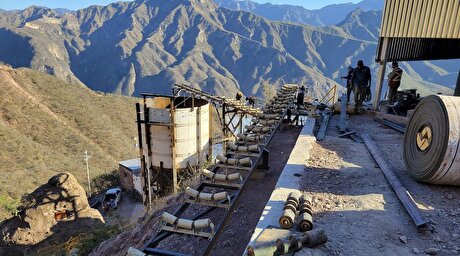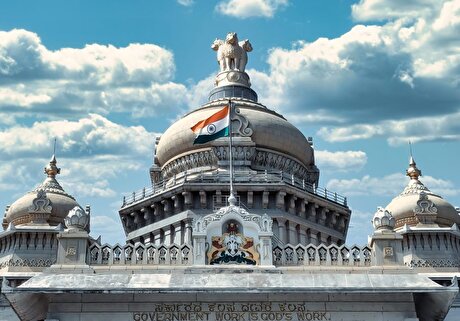
COVID-19 to Adversely Impact 15 Percent of Iranian GDP

"The adverse effects of the pandemic on our economy would be lower compared with other countries, thanks to the smaller share of services sector," he was quoted as saying by ISNA.
The precise economic cost of the outbreak of coronavirus disease, COVID-19, for Iran has not yet been determined, but it is evident that the economy, already battered by years of punishing sanctions, is facing one of its toughest years in history.
The new Iranian year holidays (March 20-April 3) have come to an end, but many businesses remain shut down as infections from the virus are on the rise. The outbreak is overshadowing almost all aspects of Iranian economy, from production to trade.
Saeed Leylaz, a university professor and economic analyst, says he believes Iran’s economy could lose $20-30 billion due to the virus.
“The hardest hit economic sector would be the services. The share of retail sales, transportation and restaurant sectors in the GDP is high; they account for one-fourth of Iran’s economy," he said.
He noted that job holders in the services subsectors, including tourism, retail trade, transportation and restaurants, usually come from the lowest social strata and therefore are on the brink of unemployment due to the spread of coronavirus.
Leylaz said the virus has acted democratically [in infecting individuals from all classes, the poor or the rich], but when it comes to its economic consequences, it would harm the poorest and most economically vulnerable members of the public.
“Coronavirus will place enormous strain on people of modest means and the working class, particularly self-employed laborers and non-union workers in urban areas. Exhaustive research must be carried out to help shed light on the degree of the coronavirus outbreak’s impact on people’s livelihoods. So, it is impossible to give an accurate estimate now. No let up in coronavirus spread by May would bring about profound economic ramifications for the country,” he said.
“Inflation rates are typically the highest during spring in Iran’s economy. Oil exports have hit their rock-bottom level in recent history; exports of dairy products and food have declined drastically and Iran’s non-oil exports have reduced by 20%. Iran will experience its toughest economic times in the next few months."
Tapping Into NDFI
Leader of the Islamic Revolution Ayatollah Seyyed Ali Khamenei has approved the withdrawal of €1 billion from the National Development Fund of Iran—the country’s sovereign wealth fund—to help fight the coronavirus epidemic.
“The needs of Health Ministry to confront the coronavirus crisis will be met through NDFI’s resources and preferably from domestic products and knowledge-based companies,” the president wrote in a letter to Mohammad Baqer Nobakht, the head of Plan and Budget Organization of Iran.
Resumption of Businesses
At the request of the coronavirus taskforce, Iran Guild Chamber has prepared a list of businesses that will be allowed to resume activity as of April 11 in Iranian provinces and as of April 18 in the capital, Tehran. The proposed list will be handed to the taskforce on Wednesday, according to the head of Iran Guild Chamber.
“The taskforce will make the final decision. Many factors, including health protocols and employment rates in different businesses, have to be taken into account,” Saeed Mombeyni was quoted as saying by Mehr News Agency.
Qasem Noudeh Farahani, the head of Tehran Guild Chamber, says around 85% of businesses are included in the list and will be allowed to resume activity.
The official said the remaining 15% are businesses that entail crowd gatherings such as restaurants, cafes and event service centers, adding that these businesses will take a longer time before they can go back to normal.
This is part of Iran’s plans to scale back restrictive measures adopted to minimize exposure to the novel coronavirus in business outlets under its new initiative dubbed Smart Distancing.
As per the plan, low-risk businesses are scheduled to resume activities.
The Central Bank of Iran has released a list of businesses that have been directly affected by the outbreak of the novel coronavirus, the COVID-19. These businesses can apply to receive support and facilities from banks.
The list includes food preparation and distribution centers, including restaurants, buffets, teahouses and other such centers; tourism centers such as hotels, inns, hostels, road recreation and other such businesses identified by the Ministry of Industries, Mining and Trade; air, rail and road transportation whether inter- or intra-city; travel agencies; apparel production and distribution units; bags and footwear production and distribution units; distributors of nuts and dried fruit, confectioneries, ice creams and juice; sport and recreational centers; cultural and educational centers; and handicraft production and distribution centers, ILNA reported.
Eight Main Challenges
The Economy Ministry recently listed eight main challenges facing Iran’s economy in the new Iranian year that started on March 20.
As reported by Fars News Agency, arguably the most biting of these challenges is the escalation of US sanctions and depletion of Iran’s foreign exchange reserves, combined with economic losses resulting from coronavirus outbreak and disruptions it has caused for businesses, that would lead to leaner tax revenues.
The continuation of the decline in oil, petroleum products and petrochemical prices due to global recession is another challenge facing the Iranian economy.
Another challenge referred to by the Economy Ministry is the "deepening recession in services sector" due to the coronavirus pandemic.
Other challenges facing the economy, according to the Economy Ministry, include withering global demand for minerals and decrease in the prices of metals; decline in consumption due to the shrinkage of people’s purchasing power; government’s rising expenses due to the impacts of coronavirus spread; and widening budget deficit in fiscal 2020-21.


Equinox Gold kicks off ore processing at Valentine mine

India considers easing restrictions on gold in pension funds

Critical Metals, Ucore ink 10-year offtake deal to supply rare earths to US plant

Locksley Resources forms US alliances to establish domestic antimony supply chain

El Salvador buys $50M in gold for reserve diversification

Freeport doubles down on Amarc’s JOY project

Ancient rocks in Australia reveal one of world’s most promising new niobium deposits – report

Construction at Helium Evolution’s Saskatchewan processing plant nearly complete

Freeport doubles down on Amarc’s JOY project

El Salvador buys $50M in gold for reserve diversification

Construction at Helium Evolution’s Saskatchewan processing plant nearly complete

Ancient rocks in Australia reveal one of world’s most promising new niobium deposits – report

Locksley Resources forms US alliances to establish domestic antimony supply chain

Critical Metals, Ucore ink 10-year offtake deal to supply rare earths to US plant

Equinox Gold kicks off ore processing at Valentine mine

India considers easing restrictions on gold in pension funds

Luca Mining expands Tahuehueto mine with Fresnillo land deal

Freeport doubles down on Amarc’s JOY project

El Salvador buys $50M in gold for reserve diversification

Construction at Helium Evolution’s Saskatchewan processing plant nearly complete

Ancient rocks in Australia reveal one of world’s most promising new niobium deposits – report

Locksley Resources forms US alliances to establish domestic antimony supply chain

India considers easing restrictions on gold in pension funds


















